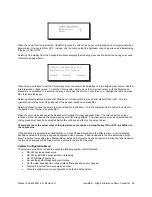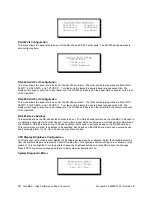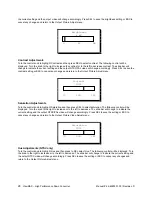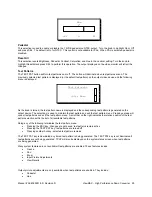
36
ViewMAX – High Performance Down Converter
Manual # 26-6090901-00 / Revision D
<command start delimiter> <device ID> [broadcast receivers] <serial command> <command end delimter>
Please refer to Chapter 5 for a detailed list of serial commands.
Command Start and End Delimiters
An RS-485 command line string must be delimited by a start and end delimiting characters. Command start delimiter
is ‘*’. Command end delimiter is ‘!’. The ‘*’ signifies the start of command line string and ‘!’ signifies the completion of
a command line string.
Device ID and Broadcast Receivers
The <device ID> field specifies the targeted ViewMAX slave device ID. This is a decimal number that can range from
0 to 32, inclusive. A device ID of 0 signifies that the command line string is a broadcast message. If device ID is non-
zero, [broadcast receivers] must be omitted. If device ID is 0, [broadcast receivers] specifies an array of devices that
must process the broadcasted command line string. [Broadcast receivers] is a hex number (up to 8 hex digits) that is
a bit-map of the device IDs. For example, 0x25 (0010 1001 binary) would mean that ViewMAX devices with device ID
1, 4, and 6 are to receive the broadcast message and process it.
As an example of an RS-485 command to a ViewMAX device with device ID 2, the following is a valid:
*2 FREEZE 0!
Responses
After the ViewMAX receives an RS-485 command, it will respond with the requested information or help and usage
information message only if the command line string is
not
a broadcast message. Please note that each response
line is followed by a carriage return and line feed (‘\r\n’):






























